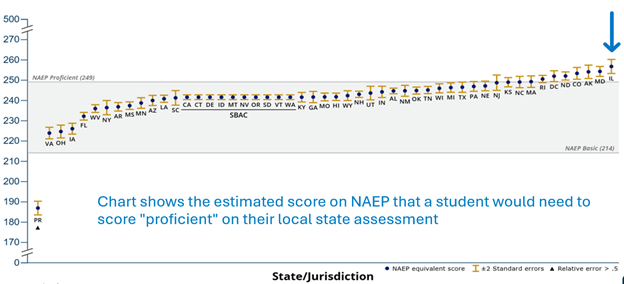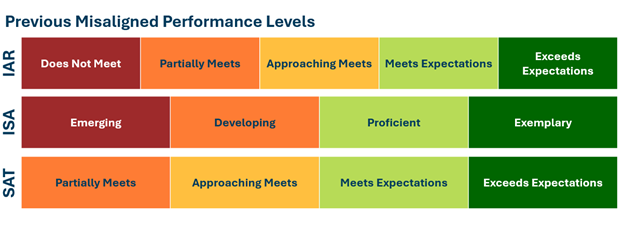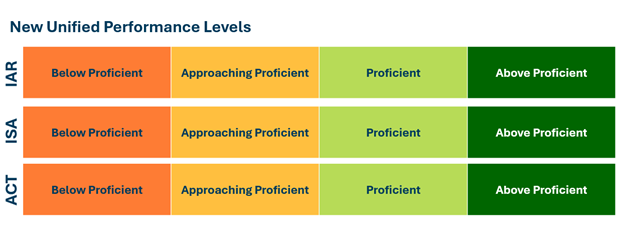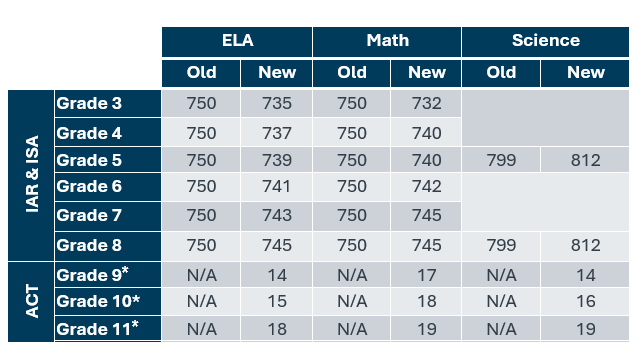For Immediate Release |
Wednesday, August 13, 2025 |
Illinois Right-Sizes Assessment Performance Levels to Give Families and Educators More Accurate Data on Student Success |
Following an 18-month rigorous design and engagement process, ISBE adopts new research-informed proficiency benchmarks |
SPRINGFIELD — The Illinois State Board of Education (ISBE) today adopted new, research-informed, and right-sized assessment performance levels to give students, families, and educators better data on academic achievement and college readiness. Prior performance levels mislabeled many students in elementary and high school, often indicating that students were less academically successful and prepared for college than they actually were. The new, unified levels correct long-standing misalignment between Illinois' state assessments and other real college and career readiness expectations.
"Illinois' students are nationally recognized for their academic achievements, but our proficiency rates have not reflected that reality," said State Superintendent of Education Dr. Tony Sanders. “For years, Illinois' proficiency benchmarks have mislabeled students, causing qualified students to miss out on opportunities for acceleration and telling a whole generation of students who were ready for college that they were not. Illinois' new performance levels bring much-needed alignment between grade levels, subjects, and actual college and career readiness expectations. I want to thank the hundreds of educators, parents, and Illinois community members who informed and supported this process over the past 18 months." "These common-sense adjustments will align state testing benchmarks with college expectations and will particularly benefit rural students, low-income students, and students of color whose true capabilities and academic successes have not been reflected in our state's proficiency rates or in their own test results," said Representative Mary Beth Canty (D-Arlington Heights). "I believe better data leads to better outcomes for all students. The Accelerated Placement Act can only achieve its goal of expanding access to advanced coursework and college preparation for all qualified students if we are using accurate measures of student achievement." "Illinois' education system continues to lead the nation, with countless examples of our students thriving and our state serving as an education destination," said Representative Will Davis (D-East Hazel Crest). "I support this effort to ensure proficiency rates give a more accurate picture of student achievement. This was an open, rigorous, and thoughtful process that will benefit students, families, and school communities across Illinois." "As a state, we have taken bold strides to increase access to college through initiatives like universal FAFSA completion and direct admissions," said Representative Laura Faver Dias (D-Grayslake). "This is another important step to remove barriers to college and career for our students. State assessment data should be meaningful to policymakers, parents, and educators—it should inform, not hold students back or discourage them from pursuing opportunities to the fullest extent of their abilities. I am confident in our ability to continue measuring progress and growth across our whole education system." "For too long, Illinois' assessment proficiency benchmarks have been misaligned with what our state needs to appropriately judge the academic performance of our kids," said Dr. Jason Leahy, executive director of Illinois Principals Association. "The work done by educators from across Illinois has resulted in proficiency benchmarks that retain rigor while offering a more accurate picture of how young people are doing in the classroom. This effort will ensure resources and supports go to students and schools that need them, bringing about better educational outcomes for both." "The Illinois Federation of Teachers applauds Superintendent Dr. Tony Sanders' and the ISBE's effort to make cut scores more rational and, in effect, more useful to teachers, students, and parents," said Dan Montgomery, president of the Illinois Federation of Teachers. "There's more work to be done—we'd like to see reduced standardized testing and fully resourced schools, for instance—but today's announcement about cut scores is a sensible and practical start." "The Illinois Association of School Boards recognizes the importance of assessment data, and supports efforts that modify Illinois and federal student assessment processes to enhance student achievement and facilitate test score comparability within and across state lines," said Kimberly Small, executive director of the Illinois Association of School Boards. "IASB hopes to continue the conversations related to alignment with national standards and champions the importance of nationally comparable assessment/accountability data. As we move forward, it will be important to ensure that comparable data continues to be collected and reported at the state and national level. This will ensure our school board members hold themselves and their district accountable for the growth and achievement of all students. IASB appreciates ISBE's responsiveness to stakeholder feedback, intention of 'right-sizing' cut scores, and the transparent process used to gather input on this decision." The Problem
(Note: Performance levels are the score ranges that divide the full spectrum of performance on the state assessment into categories. Each state decides how many levels there are, the cut scores that divide each level, and which levels qualify as “proficient." The proficiency benchmark is the score a student needs to reach on a state assessment to be considered on track in their learning for their grade level.)While Illinois students perform above the national average in eighth grade reading and math on the NAEP and are attaining record achievement in Advanced Placement (ranking in the top five states in multiple Advanced Placement success metrics, including overall participation and performance), and while Illinois is recognized as having the third best educational system in the country by CNBC, Illinois' proficiency rates have not reflected the actual success students are demonstrating in the classroom. Meanwhile, the state's science test displayed the opposite problem. Far greater numbers of students appeared “proficient" on the Illinois Science Assessment (ISA) but did not seem to have mastered grade level expectations in the classroom.
The new performance levels and proficiency benchmarks now correspond to actual postsecondary expectations and align vertically and horizontally: from grade to grade and across subjects, giving families, educators, and policymakers a more reliable and useful indication of students' readiness for college and career. Previous and New Proficiency Benchmarks by Subject and Grade
(*Note: Illinois' high school assessment changed from SAT to ACT, starting with spring 2025 testing, so there are no prior ACT benchmarks to compare.)The new benchmarks will result in recalibrated proficiency rates for 2025, setting a new, more accurate baseline for proficiency data. Proficiency rates from 2025 and forward will not be comparable to prior years' proficiency rates. However, importantly, families, educators, and policymakers will retain the ability to track longitudinal progress and recovery from the pandemic using the Student Growth Percentile Schools' accountability designations |
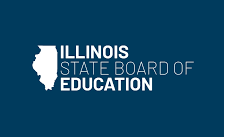
ISBE Press Release: "Illinois Right-Sizes Assessment Performance Levels"
August 15, 2025

